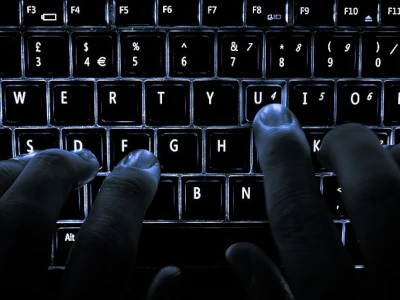
Control-Alt-Delete
Keyboard Shortcuts
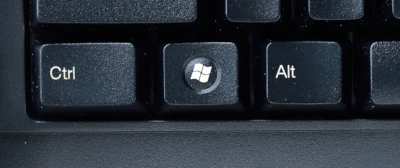
I decided to regroup all keyboard shortcuts I know/discovered and the ones I use almost everyday in this post.
It will be split in 4 parts which are global Microsoft Windows shortcuts, Calculator shortcuts, Google Chrome shortcuts and Command Prompt shortcuts.
Before showing those parts. Let’s see the keyboard layout:
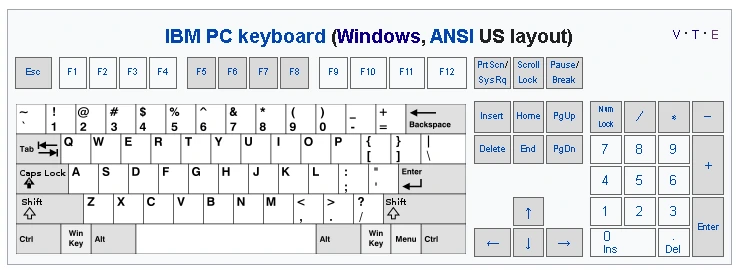 [Source]
[Source]
Most of the shortcuts use Ctrl, Alt, Win, Shift buttons/keys (bottom-left and bottom-middle). There are some exceptions with F1-F12, Tab and some keys of the right part (PageUp, Insert, Home, …) but usually the four first mentioned above should be enough for your usage.
Also, the position doesn't matter, meaning that Left Ctrl + Right Alt + Delete is the same as Left Ctrl + Left Alt + Delete.
"When you press the Alt key, you will have access to all of the menus in the current application. This means you can perform almost any task with just your keyboard. For example, you can type Alt + F + X to quit an application. When performing these shortcuts, you will not need to hold down the Alt key."
[Source]


| Shortcuts | Action / Description |
|---|---|
| Alt + F | File Menu |
| Alt + E | Edit Menu |
| Alt + S | Seach Menu |
| Alt + ... | ... Menu |
Microsoft Windows
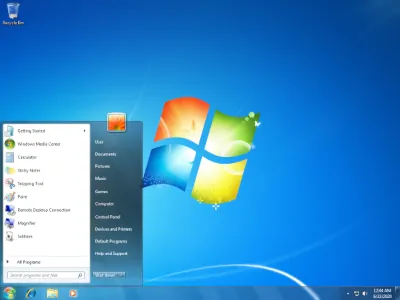
General / Basic / Clipboard Shortcuts
| Shortcuts | Action / Description |
|---|---|
| Ctrl + C Ctrl + Insert |
Copy the selected item / text into the clipboard |
| Ctrl + V Shift + Insert |
Paste contents / text of clipboard |
| Ctrl + Shift + V | Paste without formatting (plain paste) |
| Ctrl + X Shift + Delete |
Cut the selected item / text |
| Ctrl + A | Select all content (text, items in a document or window, entire picture, ...) |
| Ctrl + Z | Undo a change / previous action |
| Ctrl + Y | Redo a change / an action |
| Ctrl + F | Find / Search |
| Ctrl + S | Save |
| Ctrl + N | New |
| Ctrl + O | Open |
| Ctrl + W | Close |
| F3 | Go to next search result |
| Shift + F3 | Go to previous search result |
| Ctrl + H | Search and replace |
| Alt + Tab | Switch between open applications. Uses arrows or press tab again to switch |
| Alt + Shift + Tab | Switch between open applications (opposite direction) |
| Ctrl + Alt + Delete | Windows Security / Login screen |
| Ctrl + Shift + Esc | Open Task Manager |
| Ctrl + Shift | Switch the keyboard layout when multiple keyboard layouts are available |
| Ctrl + / Ctrl + Mouse Scroll Wheel |
Zoom in or Zoom out |
| Ctrl + 0 | Resetting zooming |
| Ctrl + Tab Ctrl + PageDown |
Move forward through tabs |
| Ctrl + Shift + Tab Ctrl + PageUp |
Move back through tabs |
| Alt + F4 | Exit the active app |
| Ctrl + F4 | Close the active item / document |
| Shift + F10 Menu Mouse Right Click |
Display the shortcut menu for the selected item |
| Alt + Enter | Toggle fullscreen / windows mode |
Screenshots / Print Shortcuts
| Shortcuts | Action / Description |
|---|---|
| Print Screen | Take screenshot of entire desktop and stores it in clipboard |
| Alt + Print Screen | Take screenshot of active window and stores it in clipboard |
| Ctrl + P |
Text Formatting / Editing / Control Shortcuts
| Shortcuts | Action / Description |
|---|---|
| Ctrl + B | Toggle Bold the selected text |
| Ctrl + I | Toggle Italic the selected text |
| Ctrl + U | Toggle Underline the selected text |
| Ctrl + Enter | Insert Line Break |
| Move the cursor in the direction specified | |
| Insert | Toggle Insert / Overwrite |
| Backspace | Erase character to the left |
| Del | Delete char to the right of cursor |
| Ctrl + Del | Delete word to the right of cursor |
| Ctrl + Backspace | Delete word to the left of cursor |
| Home | Move to beginning of line |
| End | Move to end of line |
| Ctrl + Home | Scroll to top of the console |
| Ctrl + End | Scroll to the bottom of the console |
| PageUp | Scroll / Move the cursor by one page up |
| PageDown | Scroll / Move the cursor by one page down |
| Ctrl + | Move the cursor to the beginning of the next word |
| Ctrl + | Move the cursor to the beginning of the previous word |
| Ctrl + | Move screen one line up |
| Ctrl + | Move screen one line down |
| Tab | Indent |
| Shift + Tab | Outdent |
| Shift + Shift + |
Move cursor up or down one line and select text |
| Shift + Shift + |
Move cursor left or right one character and select text |
| Shift + PageUp Shift + PageDown |
Move cursor up or down one screen and select text |
| Shift + Home Shift + End |
Move cursor to beginning or end of current line and select text |
| Ctrl + Shift + Ctrl + Shift + |
Move cursor left or right one word and select text |
| Ctrl + Shift + Home Ctrl + Shift + End |
Move cursor to beginning or end and select text |
Windows Key Shortcuts
| Shortcuts | Action / Description |
|---|---|
| Win + L | Lock desktop / Switch active user |
| Win + D | Minimizes all windows and pressing the combination a second time restores them |
| Win + M | Minimize all windows |
| Win + Shift + M | Restores windows that were minimized with Win + M |
| Win + Home | Minimize all but the active desktop window or restores all windows on second stroke |
| Win + E | Open File Explorer |
| Win + R | Open the Run dialog box |
| Win + P | Choose a presentation display mode |
| Win Ctrl + Esc |
Display or hide the Start screen |
| Win + B | Access SysTray |
| Win + U | Open Ease of Access Center |
| Win + F | Open Find files and folders |
| Win + Shift + F | Open Find computers |
| Win + Pause | Display the System Properties dialog box |
| Win + Win + |
Magnifier: Zoom in / Zoom out |
| Win + Esc | Exit Magnifier |
| Win + | Maximize the window |
| Win + | Remove current app from screen or minimize the desktop window |
| Win + Win + |
Maximize the app or desktop window to the left or right side of the screen |
| Win + Shift + | Stretch the desktop window to the top and bottom of the screen |
| Win + Shift + | Restore/minimize active desktop windows vertically, maintaining width |
| Win + Shift + Win + Shift + |
Move an app or window in the desktop from one monitor to another |
| Win + [1-9] | Open the desktop and start the app pinned to the taskbar in the position indicated by the number. If the app is already running, it switches to that app |
| Win + Shift + [1-9] | Open the desktop and start a new instance of the app pinned to the taskbar in the position indicated by the number |
| Win + Ctrl + [1-9] | Open the desktop and switch to the last active window of the app pinned to the taskbar in the position indicated by the number |
| Win + Alt + [1-9] | Open the desktop and open the Jump List for the app pinned to the taskbar in the position indicated by the number |
| Win + Ctrl + Shift + [1-9] | Open the desktop and open a new instance of the app located at the given position on the taskbar as an administrator |
File Explorer shortcuts
| Shortcuts | Action / Description |
|---|---|
| Ctrl + Shift + N | New folder |
| Enter | Open a selected application or file |
| Delete | Send a selected file or files to the Recycle Bin |
| Shift + Delete | Delete selected item permanently and skip the Recycle Bin |
| F1 | Display Help |
| F2 | Rename the selected item |
| F3 | Search for a file or folder |
| F4 | Display the address bar list in File Explorer |
| F5 | Refresh the active window |
| F6 | Cycle through screen elements in a window or on the desktop |
| F10 | Activate the Menu bar in the active app |
| F11 | Maximize or minimize the active window |
| Alt + D | Select address bar |
| Ctrl + Shift + E | Expands all folders from the tree in the navigation panel. |
| Alt + Enter | Open Properties settings for the selected item |
| Alt + P | Display preview panel |
| Alt + | View next folder |
| Alt + Backspace |
View previous folder |
| Alt + | Move up a level in the folder path |
Calculator
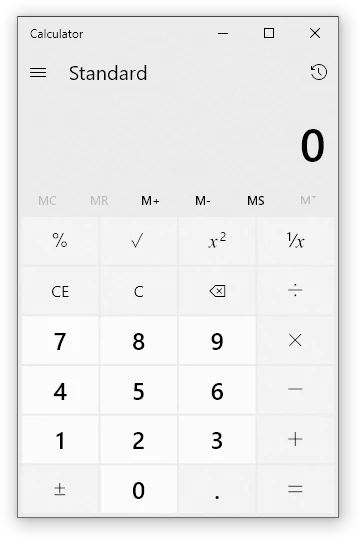
Calculator shortcuts
| Shortcuts | Action / Description |
|---|---|
| Alt + 1 | Switch to Standard mode |
| Alt + 2 | Switch to Scientific mode |
| Alt + 3 | Switch to Programmer mode |
| Alt + 4 | Switch to Statistics mode |
| F9 | Press the +/– button |
| Esc | Press the C button |
| Delete | Press the CE button |
| F2 | Select Dword in Programmer mode |
| F3 | Select Word in Programmer mode |
| F4 | Select Byte in Programmer mode |
| F5 | Select Hex in Programmer mode |
| F6 | Select Dec in Programmer mode |
| F7 | Select Oct in Programmer mode |
| F8 | Select Bin in Programmer mode |
| F12 | Select Qword in Programmer mode |
| | | Press the Or button in Programmer mode |
| ^ | Press the Xor button in Programmer mode |
| ~ | Press the Not button in Programmer mode |
| & | Press the And button in Programmer mode |
| % | Press the Mod button in Programmer mode |
| Spacebar | Toggle the bit value in Programmer mode |
| To switch bit position (useful with spacebar) | |
| Ctrl + E | Open date calculations |
| Ctrl + U | Open unit conversion |
Google Chrome

Chrome Shortcuts
| Shortcuts | Action / Description |
|---|---|
| Ctrl + T | New Tab |
| Ctrl + N | New Windows |
| Ctrl + Shift + N | New Incognito Windows |
| Ctrl + W Ctrl + F4 |
Close Tab |
| Ctrl + Tab Ctrl + PageDown |
Go to next tab |
| Ctrl + Shift + Tab Ctrl + PageUp |
Go to previous tab |
| Ctrl + [1-8] | Jump to a specific tab[1-8] |
| Ctrl + 9 | Jump to the rightmost tab |
| Ctrl + Shift + T | Open a previously closed tab |
| Ctrl + E | Google Search / Focus and select the browser's search bar |
| Ctrl + L F6 |
Go to Address Bar |
| Ctrl + U | View Source |
| F12 | Open DevTools |
| F11 | Toggle Fullscreen |
| Ctrl + D | Bookmark the current page |
| Ctrl + Shift + D | Bookmark all pages |
| Ctrl + J | View recently downloaded files |
| Ctrl + H | Open browsing history |
| Ctrl + Shift + O | View bookmarks menu |
| F5 Ctrl + R |
Refresh a webpage |
| Ctrl + F5 Ctrl + Shift + R |
Refresh a webpage ignoring cache |
| Alt + | Go Back |
| Alt + | Go Forward |
| Ctrl + Enter | Add "www." to the beginning and ".com" to the end of the text typed in the address bar |
| Alt + Enter | Open the address bar location in a new tab |
| Alt + Home | Open homepage |
Command Prompt
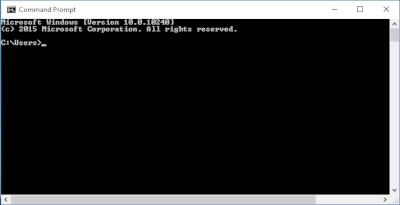
Screenshots / Print Shortcuts
| Shortcuts | Action / Description |
|---|---|
| Tab | Autocomplete folder / filename |
| F1 | Print characters of the previous command one by one |
| F3 | Repeat the previous command |
F5 |
Scroll through history of typed commands |
| F7 | Show history of previous commands |
| Alt + F7 | Clear command history |
| F8 | Move backwards through the command history, but only display commands matching the current text at the command prompt |
| F9 | Run a specific command from the command history |
| Esc | Clear command line |
| Ctrl + C | Cancel the current command |
[Tip of the post]
There is an useful command with the command prompt called "doskey" where it shows the history of all commands executed previously like that: doskey /history
dir
cls
cd ..
dir
You can also output into a file like that: doskey /history > file.txt
is typing...
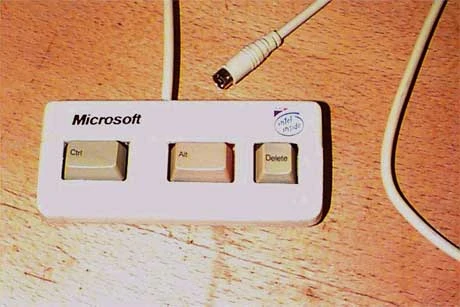
Like I said at the beginning, I didn't cover all the shortcuts available but a lot of applications share the same shortcuts. So try, experiment, and have fun !!!
Thanks for reading,
JS.
[Sources / References]
https://en.wikipedia.org/wiki/Windows_key
https://edu.gcfglobal.org/en/windowsbasics/keyboard-shortcuts-in-windows/1/
https://en.wikipedia.org/wiki/Table_of_keyboard_shortcuts
https://www.w3schools.com/tags/ref_keyboardshortcuts.asp
https://www.cnet.com/how-to/all-the-windows-10-keyboard-shortcuts-you-need-to-know/
https://www.windowscentral.com/best-windows-10-keyboard-shortcuts
https://support.microsoft.com/en-us/help/12445/windows-keyboard-shortcuts
https://ss64.com/nt/syntax-keyboard.html
https://support.google.com/chrome/answer/157179?co=GENIE.Platform%3DDesktop&hl=en&oco=0
